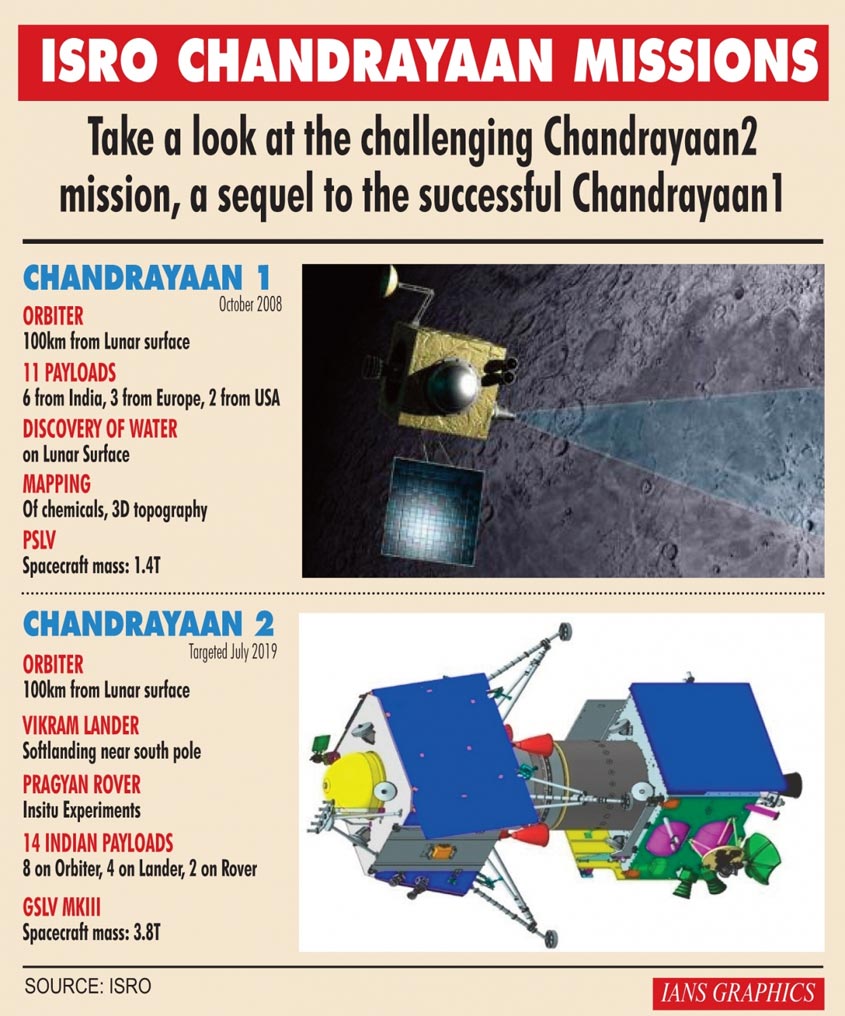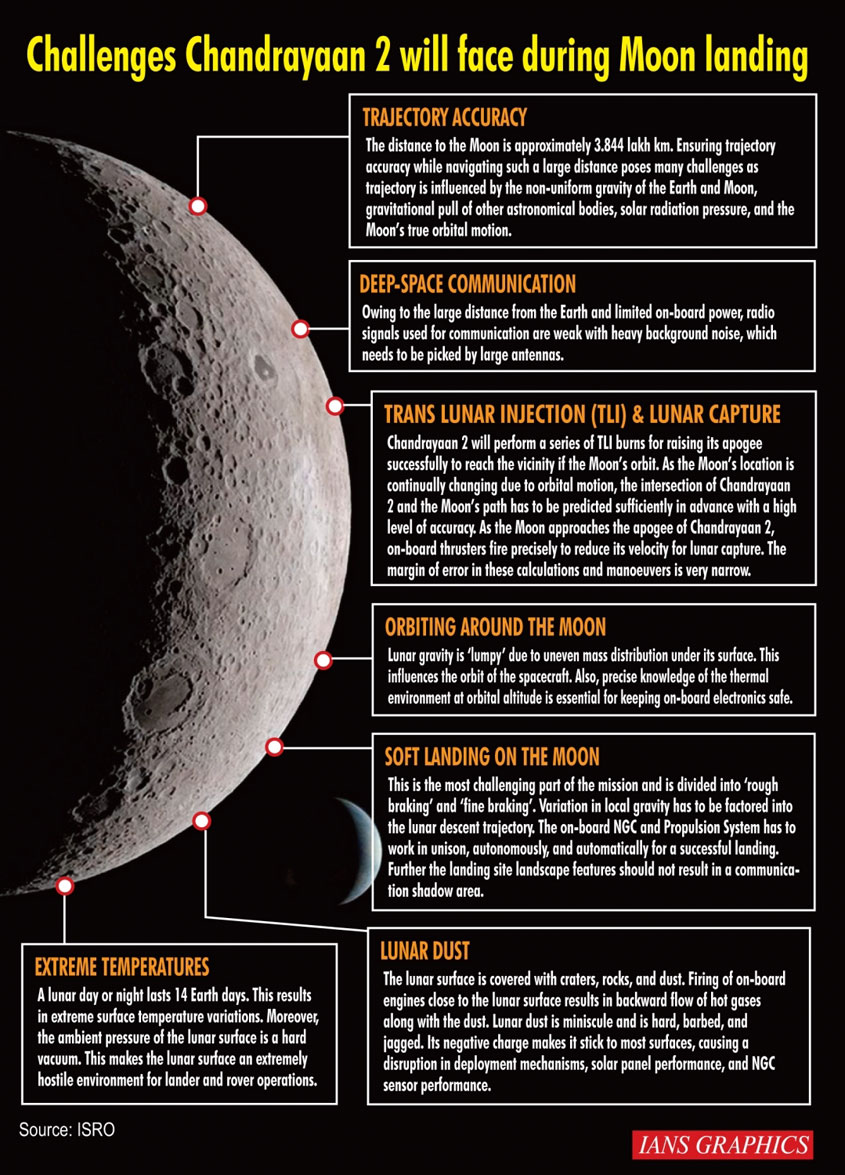Sriharikota: Making history, India launched its second moon mission Chandrayaan-2 on Monday at 2:43pm.
The mission seeks to explore the uncharted Lunar south pole. India's most powerful rocket GSLV-Mk0III-M1 is carrying a landing rover which will make a soft landing on the surface of the moon in the first week of September.
The launch comes a week after the first attempt for lift-off was aborted due to a technical snag.
The Rs 978-crore mission, which has been rescheduled for Monday after scientists corrected the glitch in the rocket, was launched from the second launchpad at Satish Dhawan Space Centre here, over 100 km from Chennai.
Scientists led by ISRO chief K Sivan watched the launch sequence in rapt attention and broke into applause after every key stage of the rocket's flight which progressed precisely as programmed.
A visibly relieved Sivan, who announced the success of the mission, said "it is the beginning of a historical journey of India towards the moon."
"We bounced back in flying colours after the earlier technical snag," he said about the glitch that made the space agency reschedule the Chandrayaan-2 launch from July 15 to Monday.
There will be 15 "very crucial manouvres" in the next one and half months before the satellite is brought around the moon, he said in his post-launch address from mission control centre.
"After that the D-Day will come and on that day we are going to experience 15 minutes of terror, to ensure the landing is safely near the South Pole," he added.
The Indian Space Research Organisation (ISRO) scientists, who aborted the previous launch with 56 minutes left for the countdown to end on July 15, had taken quick remedial action based on an analysis carried out by a team set up to look into the snag and announced the rescheduled launch three days ago.
Chandrayaan-2 comes 11 years after ISRO's successful first lunar mission Chandrayaan-1 which scripted history by making more than 3,400 orbits around the moon and was operational for 312 days till August 29, 2009.
"Chandrayaan 2 is ready to take a billion dreams to the moon now stronger than ever before! Join us for the launch on Monday 22 July, 2019 at 2:43 PM IST," ISRO had tweeted on July 18 while announcing the rescheduled launch.
On the eve of the launch, ISRO Chairman K Sivan said all preparations were on and the glitch had been rectified.
A Laser Retroreflector Array (LRA) of US space agency NASA is among the payloads and is aimed at understanding dynamics of Earth's moon system and deriving clues on Lunar interior.
According to ISRO, the lunar South Pole is an interesting surface area which remains in shadow than North pole.
There is a possibility of the presence of water in permanently shadowed areas around it, the agency said, adding craters in the South Pole region have cold traps and contain fossil record of the early solar system.
The lander 'Vikram', named after father of Indian space research programme Dr Vikram A Sarabhai, carrying the rover 'Pragyan', will be landed in a high plain between two craters at a latitude of about 70 degrees South of the moon.
Then the 27-kg 'Pragyan' meaning 'wisdom' in Sanskrit and a six-wheeled robotic vehicle, will set out on its job of collecting information on lunar surface.
A safe site free of hazards for landing would be decided based on pictures sent back by the camera onboard the lander and after touchdown the rover will carry out experiments for 14 Earth days, equals one Lunar Day.
The launch was witnessed by nearly 5,000 people who were accommodated at a viewing gallery, located a few kms from the launchpad, thrown open to the public by the ISRO in May last.
(With inputs from agencies)


















